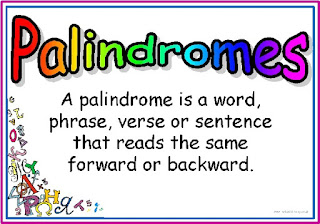 |
| Palindrome.jpg |
According to Wikipedia:
A palindrome is a word, number, phrase, or other sequences of characters which reads the same backward as forward, such as madam or racecar or the number 10801. Sentence-length palindromes may be written when allowances are made for adjustments to capital letters, punctuation, and word dividers, such as "A man, a plan, a canal, Panama!", "Was it a car or a cat I saw?" or "No 'x' in Nixon".Let's watch a video which explains the concept of this :
Now, let's jump into the code that will implement this in C++ Langauge:
Kepp Coding and Kepp Learning :)





